How Do You Raise a Loggerhead Shrike?
Meet the loggerhead shrike—a beautiful songbird with a gruesome reputation for impaling its prey on thorns and barbs. More frightening than the “butcher bird’s” hunting habit is the reality that their populations are in steep decline. Since 2005, the Smithsonian Conservation Biology Institute (SCBI) has worked to breed and reintroduce this bird back into the wild. Get an inside glimpse of what it takes to care for and conserve shrikes from bird keeper Leighann Cline!
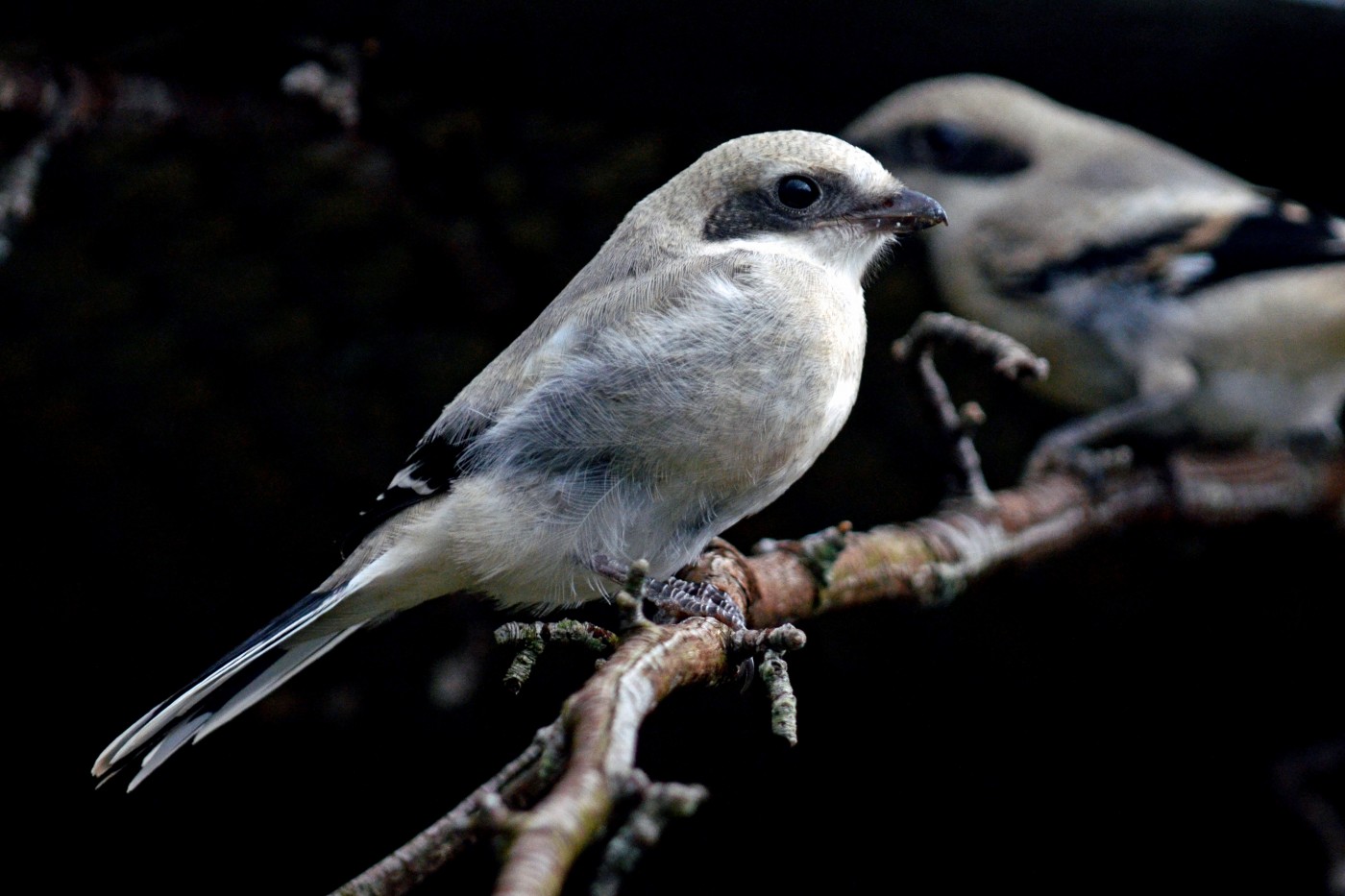
Pair Introduction
Before the breeding season, every loggerhead shrike starts out single. That’s because these birds are solitary for most of the year, and we imitate this natural behavior by keeping them in individual enclosures throughout fall and winter. Once we receive breeding recommendations from our partners at Wildlife Preservation Canada, we place those birds in adjacent enclosures with a “howdy” screen in between. In this setting, they can see, hear and interact with one another, but still have their own separate spaces. This gives us a safe and controlled setting to determine if the male and female are interested in each other.
Breeding
Breeding season begins in late February, and to help “set the mood” I remove the screen that separates our potential pair and provide them with plenty of live crickets. Since birds are not always compatible, I observe the shrikes from a blind a short distance away on the hillside. If all goes well, the male will bring a cricket to the female, and she will accept his offering. This gesture is followed by singing and courtship displays. If a female is really smitten, she may start nest building immediately!
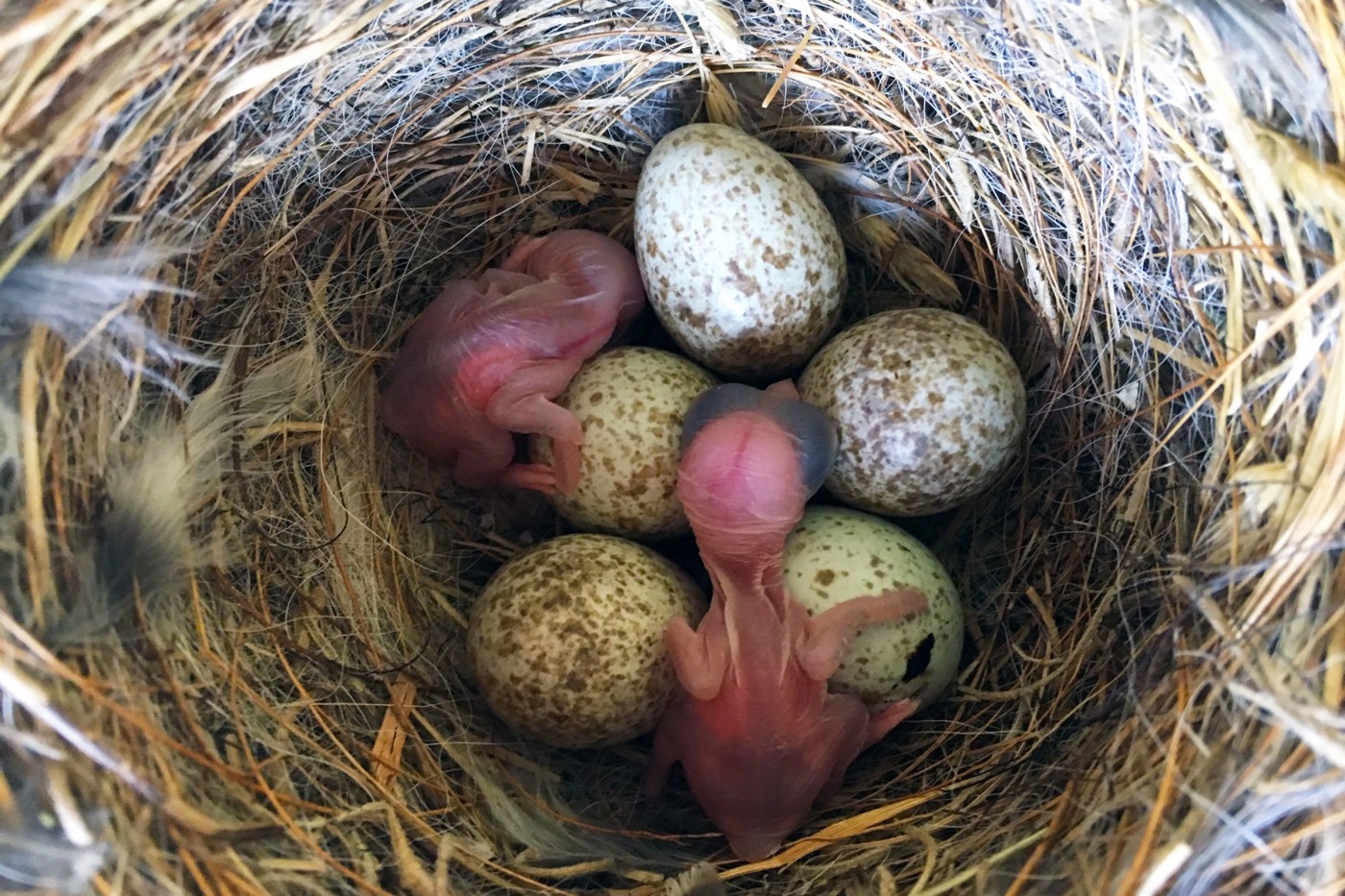
Nest Building
Shortly after the pair meets, nest building begins. I provide them with many materials to choose from, including sticks, branches, grasses, coconut husk and Spanish moss. Shrikes like to line the inside cup of their nest with fur, so I often ask my fellow SCBI keepers to contribute. Our birds have lined their nests with fur and hair from cheetahs, Przewalski’s horses and bison!
The parents-to-be spend one to two weeks perfecting their nest. The female does most of the work, but the male likes to show the female he is making an effort by bringing the occasional twig or tuft of fur over to her. Most of the time, the female will immediately remove his efforts and continue to make the nest to her liking! She does, however, accept gifts of food from him throughout the process.
Egg Laying and Incubation
Once the nest is “perfect,” the female lays her clutch of eggs—one per day—over five or six days. When I deliver the parents’ diets in the morning and afternoon, I check to see if both birds are healthy and getting along. A sure sign that the female has started laying eggs is when she sits on her nest in the morning, but not in the afternoon. Only the female incubates the eggs; she leaves only for a few brief moments.
When the female has been sitting for a few days, I enter the enclosure to check the nest. I count all the eggs, then candle (shine a light into) one or two to check for fertility and development. The whole process only takes about 2 minutes. Later, I observe the pair from a distance to ensure the female returned to her nest. If all goes well, the chicks hatch in just 16 to 18 days!
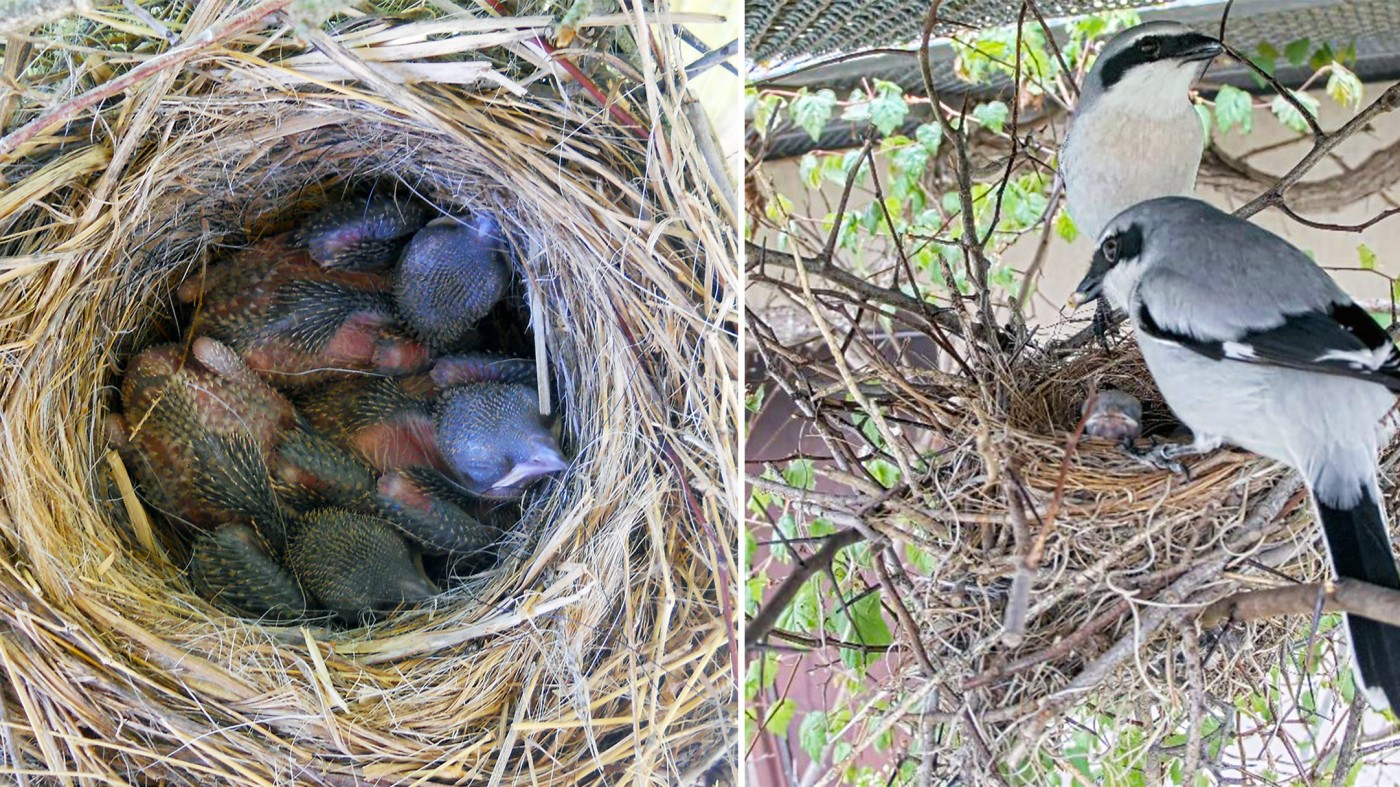
Nestlings
To determine when hatching has occurred, I look for three behaviors: the birds appear to consume more of their diet; the male more frequently brings food to the female; and the female stands up and reaches underneath her after the food has arrived.
The nesting period is a sensitive time, so I try not to disturb the family for several days. Once I think the chicks are five to seven days old, I will enter the enclosure for a quick nest check. Hopefully, I find chicks! When I do, I count them and take note of their size and developmental milestones to confirm the hatching date more accurately. This nest check is usually a bit tricky, as some of our males will fiercely defend the nest!
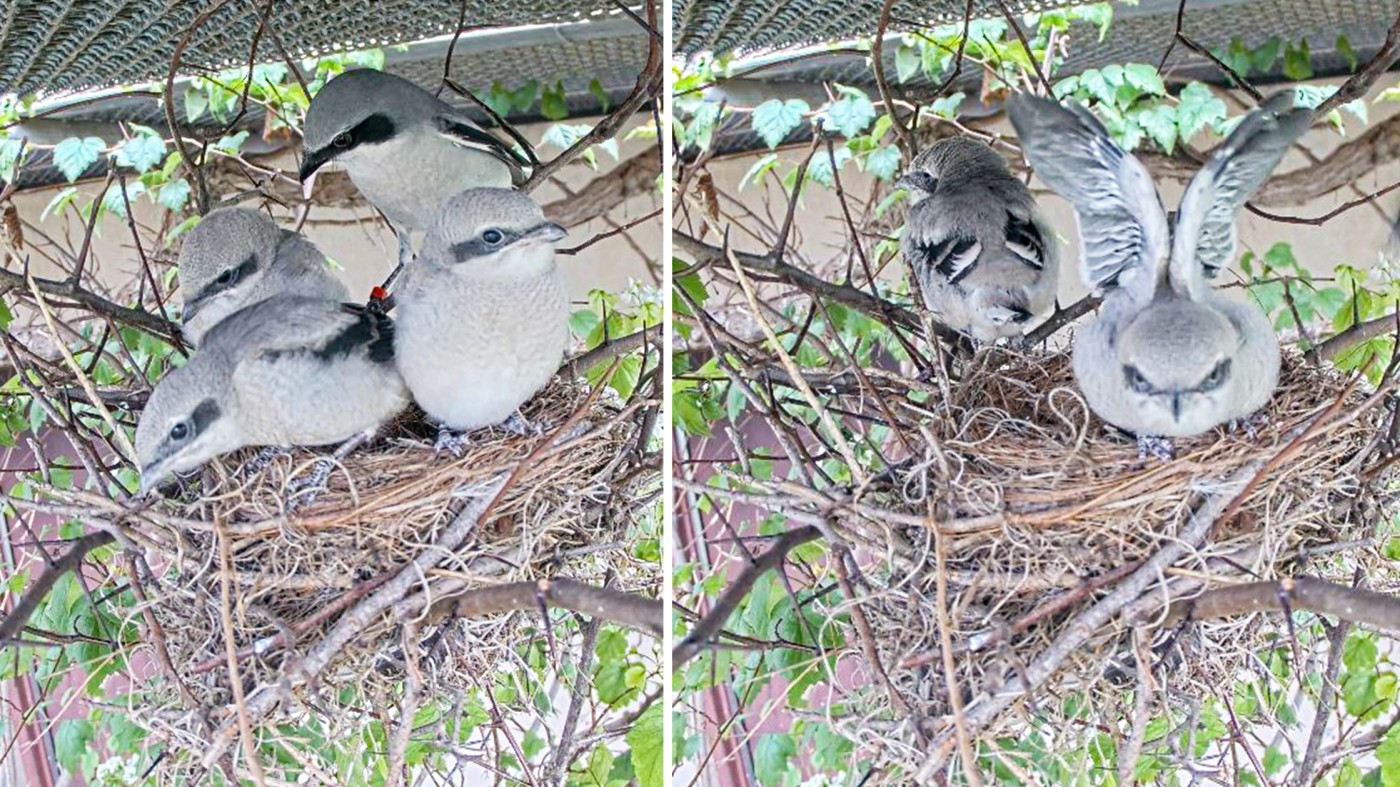
Fledging
Loggerhead shrike chicks go from hatching to fledging in just over two weeks. Usually, I will see them standing on the edge of the nest for a day or two before they finally take the leap. The first few days after they fledge, the chicks will hide themselves in the leaves and stand very still when I approach. It is often challenging to account for all our chicks during this time, so I may watch from a blind and observe where the parents are bringing food.
As they grow, the fledglings become more mobile and very demanding. The parents have their work cut out for them—they bring food constantly to all of their chicks. Live crickets and mice help the chicks learn to start feeding themselves. Since these chicks will be released into the wild, it is crucial that they learn how to hunt for themselves.
Chicks stay with their parents for at least 3 weeks after they fledge. After that, mom and dad’s job is done, and we move the juvenile birds to a new enclosure, which they share with their siblings. To prepare them for release, we tag each individual with a unique, colorful band, deworm them and administer a series of vaccinations to protect them against West Nile virus. After our young shrikes leave, mom and dad return to their respective enclosures for the fall and winter while we await next season’s breeding recommendations.
Release
Every year, the loggerhead shrikes we hatch are released in Ontario, where the species is critically endangered. One night in early August, we round up all of our juveniles, place them in crates and drive them overnight to the United States-Canada border. Once we clear inspections on both sides, we take the birds directly to our Wildlife Preservation Canada partner’s release site in Carden, Ontario.
At the site, the shrikes are released into field pens. They spend about two weeks acclimating to their environment. At the end of that period, our partners examine each bird and band them with a unique numerical band and multiple color bands, which make it easy for the field team or the general public to identify an individual bird and report them back to us..
Some of them also receive radio telemetry tags to help track their post-release movements using the MOTUS system—a network of radio towers that pick up a bird’s unique tag number when the animal flies near it.
Once the birds receive their tags, they are “soft-released;” that is, the doors to the field pens are opened, but the field team continues to provide food and water for the birds. Birds can come and go from the pens as they please until they choose to start their migration.
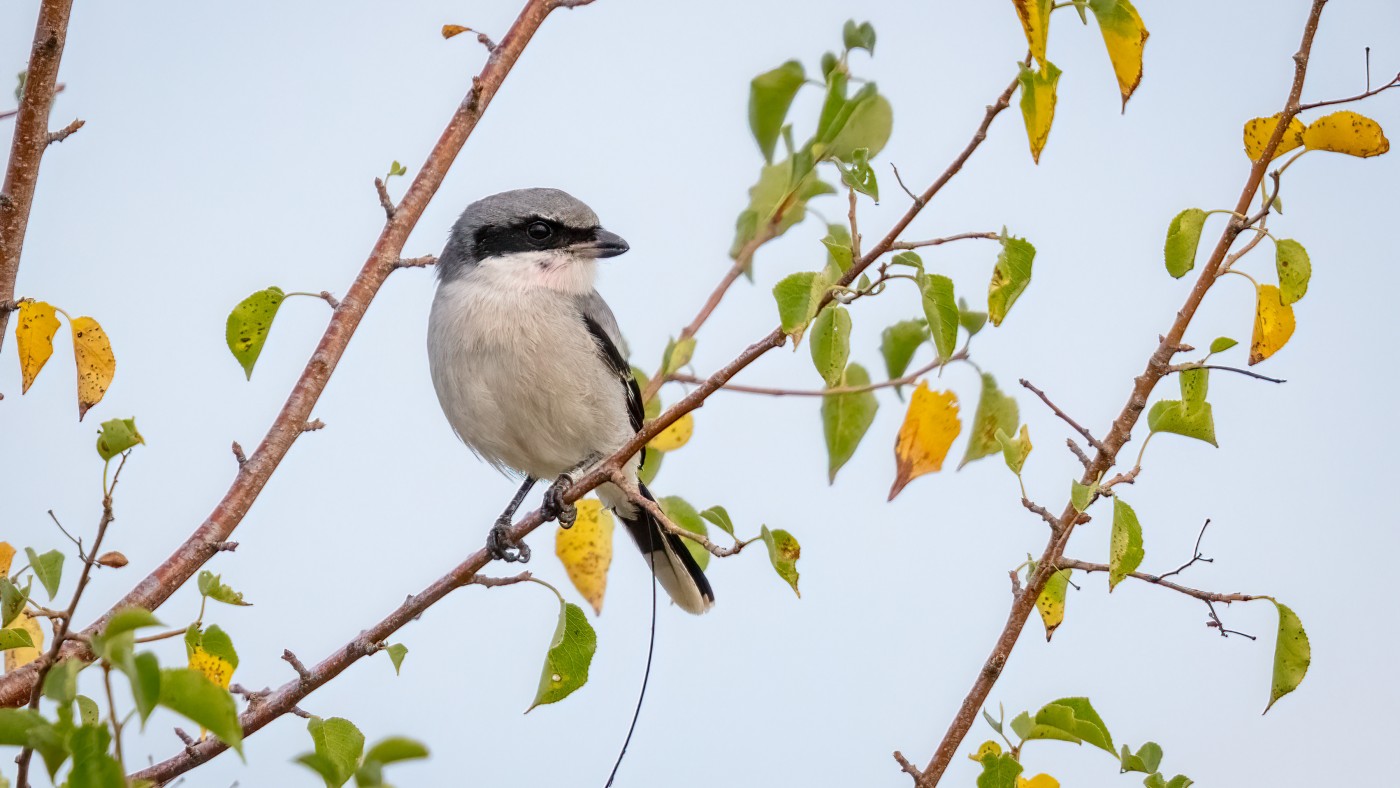
What’s Next?
The Loggerhead Shrike Reintroduction Program has been very successful. Since 2000, more than 1,300 shrikes have been released into the wild. Without this program, many of the most vulnerable shrike populations—like those found in Ontario—would have been wiped out. This year, about one-third of the birds spotted in Ontario came from breeding facilities like ours at SCBI!
In addition to the MOTUS system, the Loggerhead Shrike Reintroduction Program relies on citizen scientists in the U.S. and Canada to get into birding and go looking for shrikes. If you are lucky enough to find one with bands on its legs, you can report it on eBird or to your local wildlife department.
In September 2021, a birder near the U.S.-Canada border spotted a shrike with a MOTUS transmitter attached and took some fantastic pictures of it. Those photos made it to our partners, who looked up the band numbers and found that it was one of the chicks that was raised at SCBI this past summer! The bird was observed actively hunting and capturing prey and appeared to be in great condition. It is always wonderful to know that our hard efforts are rewarded with an animal thriving in the wild.
This article appears in the November 2021 issue of National Zoo News.
Fly into the captivating world of our feathered friends in BIRDS: A Smithsonian Coloring Book. Unlock your creativity and bring 38 beautiful birds and their lush habitats to life. Proceeds from your purchase support animal care and conservation at the Smithsonian's National Zoo and Conservation Biology Institute.
Related Species:
